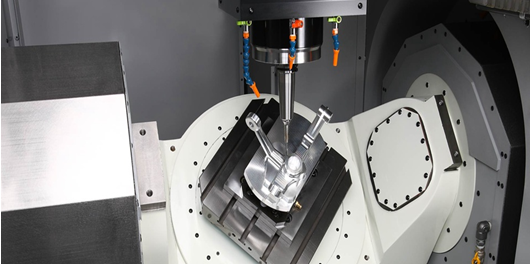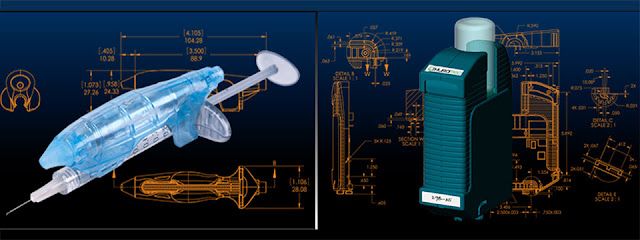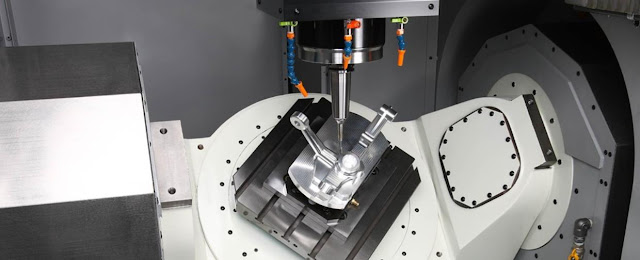Injection Molding
Injection molding is a common method for production and is commonly most popular over different processes, given its capability to economically create complicated components to tight tolerances. Before any components will be wrought, however, an appropriate injection mold should be designed, factory-made, and commissioned.
The mold style directly determines the wrought half quality and molding productivity. The injection mold is itself a fancy system comprised of multiple components that area unit subjected to several cycles of temperature and stress. There are often trade-offs in mold style, with lower-cost molds generally leading to lower product quality or inefficient molding processes. Engineers ought to try to style injection molds that area unit “fit for purpose”, which suggests that the mold ought to produce elements of acceptable quality with token lifecycle value whereas taking a minimum quantity of your time, money, and risk to develop.
What is injection molding?
Injection molding is usually remarked as a “net shape” producing method because the wrought elements emerge from the molding method in their final kind with no or token post-processing needed to any form the merchandise. The mold is fixed and clamped between a stationary and moving platen. The mold usually is connected to and moves with the machine platens, in order that the wrought elements area unit fashioned within a closed mold, once that the mold is opened in order that the wrought elements will be removed.
The mold cavity is that the “heart” of the mold wherever the compound is injected and coagulated to supply the wrought part(s) with every molding cycle. Whereas molding processes will take issue considerably in style and operation, most injection holding processes usually embody plastication, injection, packing, cooling, and ejection stages.
Mold Functions
The primary operate of the mold is to contain the compound soften at intervals the mold cavity in order that the mold cavity can be fully stuffed to make a plastic part whose form replicates the mold cavity.
A second primary operate of the mold is to with efficiency transfer heat from the new compound soften to the fluid flowing through the mold, specified injection wrought product could also be created as uniformly and rapidly as potential.
A third primary operate of the mold is to eject the half from the mold in Associate in economical and consistent manner while not conveyance excessive stress to the moldings.
Mold Types
1- Two plate
An easy two-plate mold has been accustomed introduce the essential parts and functions of Associate in injection mold. Concerning 1/2 all molds closely follow this style, since the mold is simple to prototype and economical to supply. However, the two-plate mold has several limitations, including:
-restriction of the feed system route to the parting plane;
-restricted gating choices from the feed system into the mold cavity or cavities;
-restriction on the tight spacing of cavities;
-further forces obligatory on the mold by the soften flowing through (and being pressurized within) the feed system accumulated material waste incurred by the set of the soften within the feed system.
-accumulated cycle time associated with the plastication and cooling of the soften within the feed system
2- Three-Plate mold
The three-plate mold is therefore named since it provides a third plate that floats between the molds cavities and therefore the high clamp plate. Three-plate mold that's totally open with the moldings still on the core inserts. The addition of the third plate provides a second parting plane between the plate assembly and therefore the high clamp plate for the supply of a feed system that traverses parallel to the parting plane. Throughout molding, the plastic soften flows out the nozzle of the molding machine, down the disorder bushing, across the primary runners, down the sprues, through the gates, and into the mold cavities. The feed system then freezes in situ with the moldings.
3- Hot Runner mold
Hot runner molds give the advantages of three-plate molds while not their disadvantages, however make to alternative problems. The term “hot runner” is employed since the feed system is often heated so remains in an exceedingly liquid sculpture throughout the whole molding cycle. As a result, the new runner doesn't consume any material or cycle time related to transfer the soften from the molding machine to the mold cavities.
Mold materials
Aluminum alloys provide very low mold-making costs and low operating costs. For this reason, the aluminum alloys should be seriously considered when a molding application does not require high strength or hardness. Copper alloys, such as C18200, provide even lower mold operating costs but have higher mold-making cost due to higher materials cost coupled with lower machining rates. Accordingly, copper alloys are good candidates for molding applications with high production volumes that require moderate strength and hardness.
Stainless steel, SS420, has a much higher cost than molds made of P20 due to
SS420’s lower thermal diffusivity, but it should be used when corrosion resistance is needed. H13 has a very high mold-making cost due to its very high hardness and very low machining speed, but it is commonly used when abrasion resistance is desired. At the other end of the cost spectrum, aluminum 6061 is a common material that is used for prototype molds given its reasonable balance of properties, low procurement cost, and machinability.
Injection molding materials
Thermosets
Properties: solid, harder, intense, light.
Applications: vehicle components, development materials.
Illustrations:
-Unsaturated Polyesters: polishes, varnishes, watercraft structures, furniture
-Epoxies and Resins: pastes, covering of electrical circuits, composite materials like fiberglass utilized in heavier-than-air make cutting edges, water crafts and so forth
Elastomers
Properties: these square measure thermosets, and have elastic like properties.
Applications: medicinal veils, gloves, elastic substitutes
Illustrations:
-Polyurethanes: cushion, pad, protection, toys
-Silicones: surgical gloves, O veils in medicinal and elective applications, joint seals
Thermoplastics
Properties: low temperature, soft, adaptable.
Applications: bottles, sustenance wrappers, toys
Illustrations:
-Polyethylene: bundling, electrical protection, drain and water bottles, bundling film
-Polypropylene: cover filaments, car guards, microwave holders, prosthetic body components for incapacitated people
-polyvinyl (PVC): assurance for electrical links, floor and divider covers, siding, credit
Cards, car instrument boards a couple of
-Polystyrene: expendable spoons, forks and so forth, also acclimated construct Styrofoam
-Acrylics (PMMA: polymathic methacrylate): paints, counterfeit hide, plexiglass
-polymeric amide (nylon): materials of textiles, apparatuses, bushing, and washers
-PET (polyethylene terephthalate): bottles for acidic nourishments like juices, sustenance plate, plastic tapes
-PTFE (polytetrafluoroethylene): non-stick covering, Gore-Tex (waterproof shells), yarn.






Comments
Post a Comment